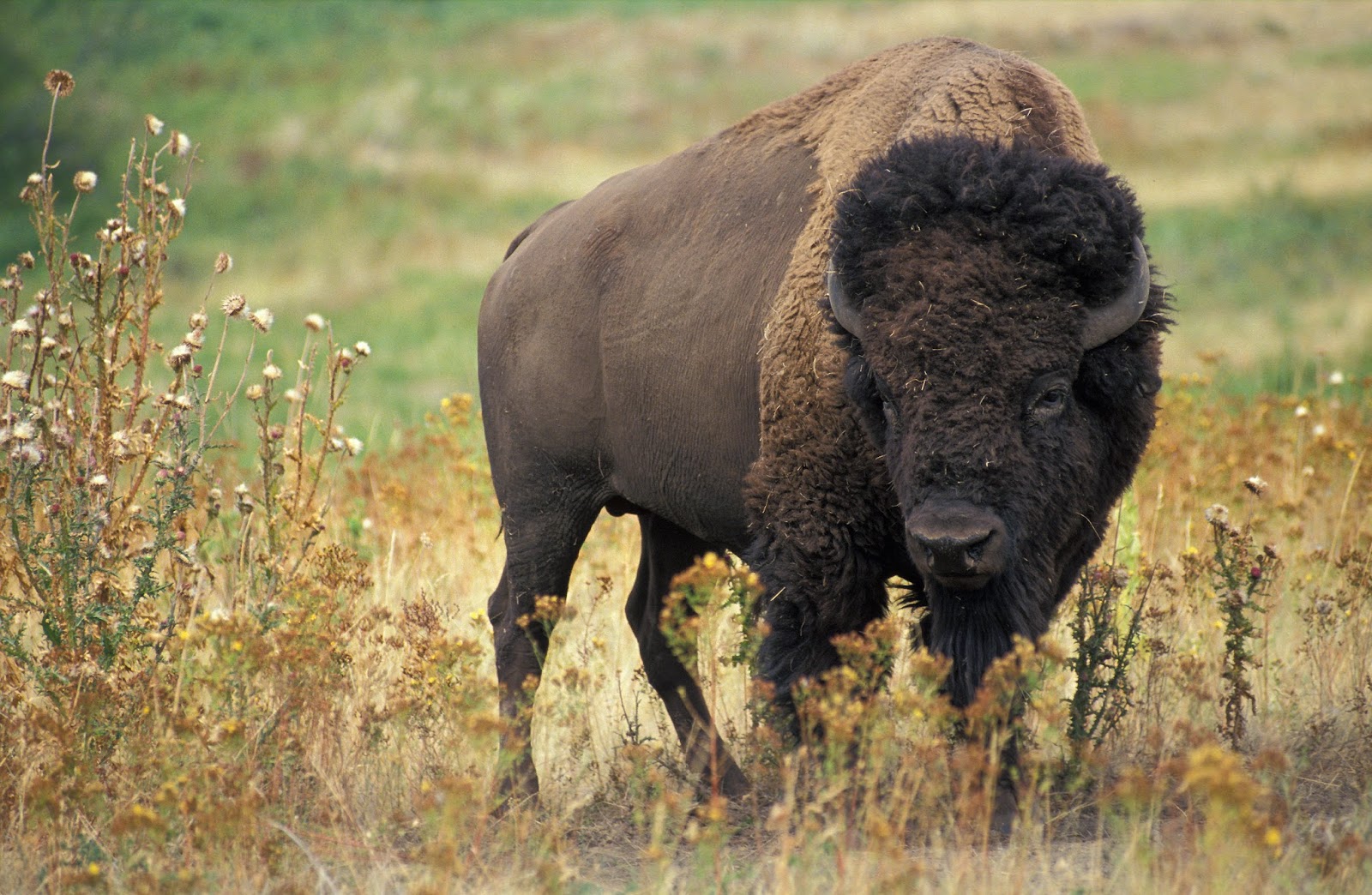 |
| American Bison |
When homesteaders like Isaac B. Werner arrived on the prairie, they found few trees. They had not yet planted corn, the stalks and cobs of which they would in the coming years use for fuel (See "Corn Harvest, Then and Now," 9-18-2014 in the blog archives). Lacking the traditional fuel sources, like wood and coal, these homesteaders found an unexpected source--the dried dung of the American bison, or buffalo as the bison were commonly known. The dung, nicknamed 'prairie coal,' burned slowly and the odor was barely noticeable, according to contemporary accounts.
In the early years of settlement of the prairie, there were unimaginably vast herds of buffalo. Native Americans used the animal not only for food and hides but also found uses of other parts of the buffalo. Because the buffalo was so important to Native Americans, religious rituals were often a part of the hunts.
 |
| A pile of American Bison skulls |
As the plains were settled by people from other cultures, the animals seemed to be inexhaustible. It was estimated that at least 25 million American bison roamed the United States and Canada, but by the late 1880s perhaps as few as 600 remained in the US! They were often killed for their hides, the meat left on the prairie to rot, or they were killed simply for sport. Sadly, they were also killed as a way to defeat the Indian populations, for slaughtering the buffalo meant less food and materials available for used by the Native American populations. Cattlemen did not like grazing competition from the buffalo for their cattle's range. However, it is also true that one method used by the Indians in their bison hunts was driving huge herds off cliffs to kill or wound them.
Fortunately, a few people recognized the importance of preserving this great prairie animal. One of the earliest proponents of reintroducing the North American Bison to the region of its historic range was James "Scotty" Phillip of South Dakota. He bought five calves roped during the Last Big Buffalo Hunt on the Grand River in 1881 and took them back to his ranch on the Cheyenne River. When he died in 1911 he had a herd of over a thousand bison, from which other privately owned herds originated.
 |
| Painting by George Carlin |
The Yellowstone Park Bison herd was formed from a few bison that survived the mindless slaughter of the 1800s, and the the Park's bison numbering over 4,000 are the descendants of those 23 hidden bison.
Today the US Department of Interior is seeking lands on which to move animals from the Yellowstone herd. Because the bison migrate during winter, cattlemen outside the Park fear the spread of brucellosis to their cattle. As a result, the government has allowed bison slaughters to avoid the risk of the disease spreading to surrounding cattle herds.
Some Yellowstone bison have been quarantined for years to make sure they are free from the disease, with the intention of moving them to appropriate areas outside Yellowstone. Kansas is among the states with possible sites for these animals with the pure genetics of the original American bison. The Tallgrass Prairie National Preserve was identified as potentially suitable for relocating these bison.
Small herds of buffalo can occasionally be seen in pastures in agricultural areas, but they are nearly always bison-cattle hybrids that lack the pure genetics of the Yellowstone herds.
Millions of acres of public lands have been leased to ranchers for grazing livestock, and the National Wildlife Federation has established a program to negotiate a fair market price with ranchers to retire their grazing leases and return these acres to the exclusive use of natural wildlife, including the bison. Their program uses the catch line "Adopt a Wildlife Acre. Give Bison Room to Roam."
Millions of acres of public lands have been leased to ranchers for grazing livestock, and the National Wildlife Federation has established a program to negotiate a fair market price with ranchers to retire their grazing leases and return these acres to the exclusive use of natural wildlife, including the bison. Their program uses the catch line "Adopt a Wildlife Acre. Give Bison Room to Roam."
Perhaps there were a few American bison left on the prairie when Isaac Werner arrived in 1878, but for most settlers at that time the only resource left by the bison were their dried dung used for fuel and their bones, which could be collected and sold for use in fertilizer.

1 comment:
It must have been something to see when the herds stretches as far as eye could see and could block a train from moving for two or three days.
Bison numbers have been estimated as high as 66 million across North America. There is also a possibility that anthrax played a role in their demise, along with the reasons you list, Indian control being a prime one. The Indians used the buffalo jump as a means of slaughter before they had horses which allowed them to hunt far and wide. Without horses they used every bit of the animal but with horses they could afford on occasion to take the delicacies of hump and tongue and leave the rest. There are quite a few bison in western Canada again, both wild and farmed. The wild ones are in National Parks such as Prince Albert. My friend Gord Vaadeland (you can find him on Facebook) is very active in teh preservation of the PA herd.
Post a Comment